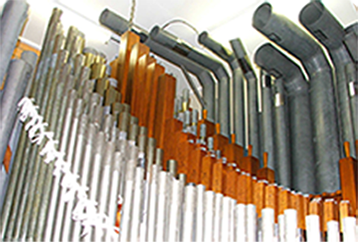 A manometer is used in science to measure pressure. It is simply a “U” shaped glass or plastic tube, partially filled with liquid. One end is left open to the atmosphere, and the other end is connected to whatever is being measured. Unconnected, the liquid levels are the same (the atmosphere is pressurizing both sides equally). When connected, the levels shift and the difference between heights of the liquid on the two sides is measured. The higher the pressure being measured, the proportionally higher the level difference.
A manometer is used in science to measure pressure. It is simply a “U” shaped glass or plastic tube, partially filled with liquid. One end is left open to the atmosphere, and the other end is connected to whatever is being measured. Unconnected, the liquid levels are the same (the atmosphere is pressurizing both sides equally). When connected, the levels shift and the difference between heights of the liquid on the two sides is measured. The higher the pressure being measured, the proportionally higher the level difference.
By definition, one atmosphere is equivalent to 29.92 inches of mercury in a mercury manometer, and to 406.8 inches of water in a water manometer, and equates to 14.7 pounds per square inch (psi).
Pipe organs require high volume low pressure air to supply the pipes. In the organ world, this is referred to as “wind”. Wind pressures are measured in the manometer in inches of water. While all organ wind pressures are low, classical instruments run on 3”-6” of wind, while theatre organs run on 8”-25” and more.
Consider a rank of theater pipes on 15” wind. That converts to only 0.54 pounds per square inch (psi). Compare that to an automobile tire with about 30 psi, or a bicycle tire with about 80 psi.
Thus, we find that the human lungs are easily capable of producing pressures at which individual organ pipes can operate. (Blowing into an organ pipe is not recommended, however, due to the lead used in manufacture, and to the possible contamination of the pipe with the moisture in your breath!)










